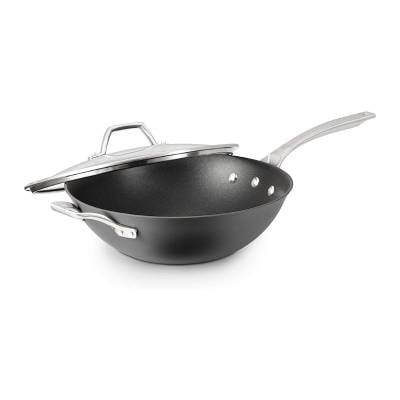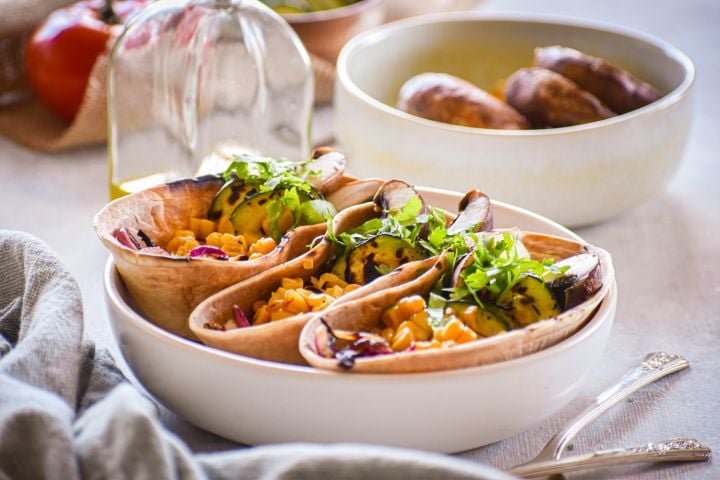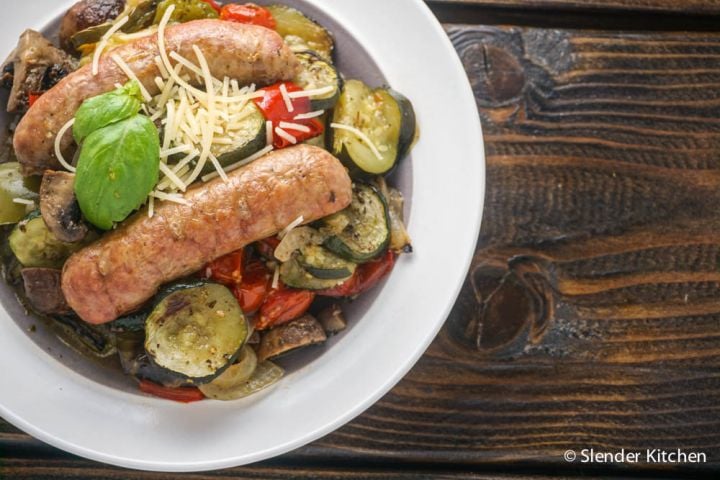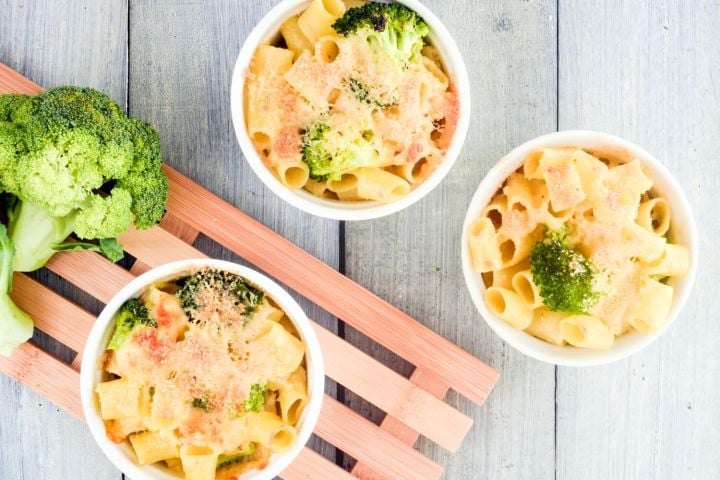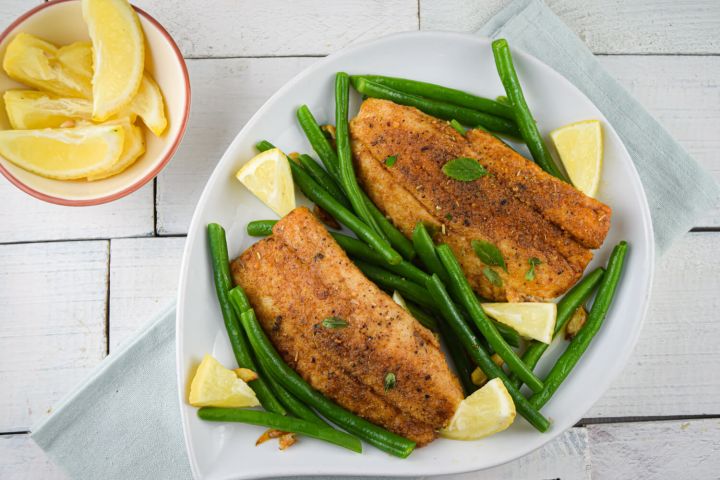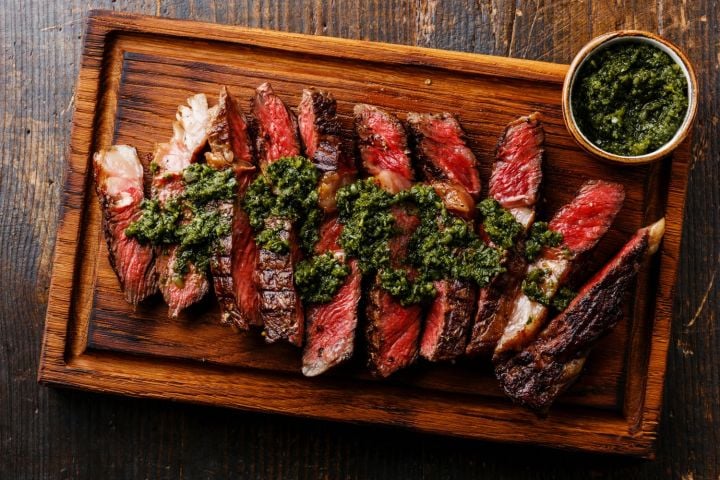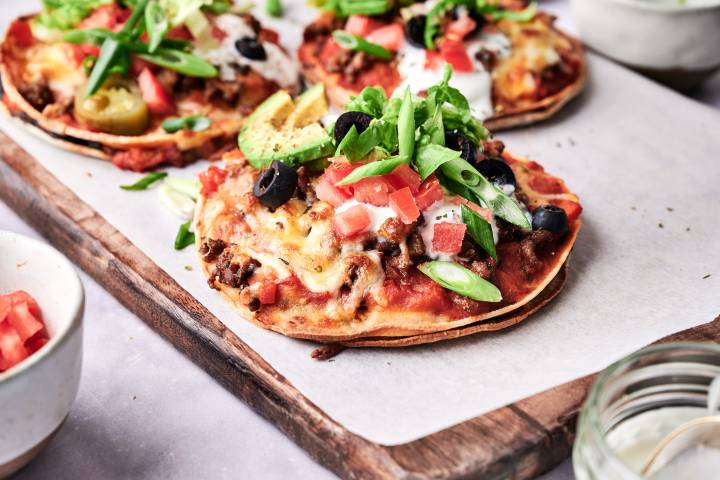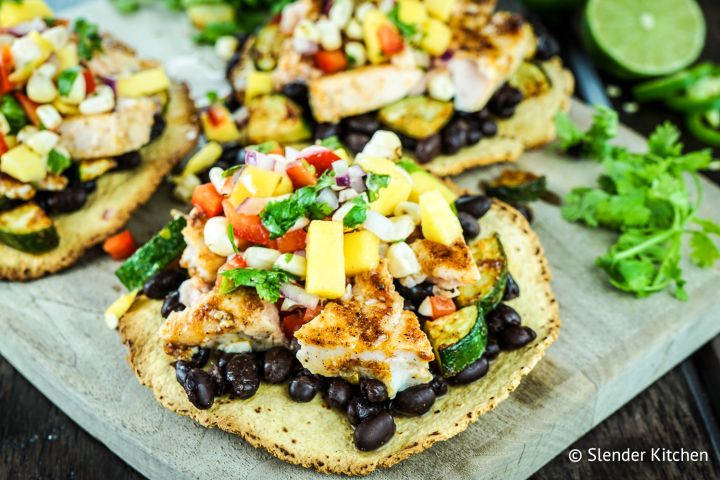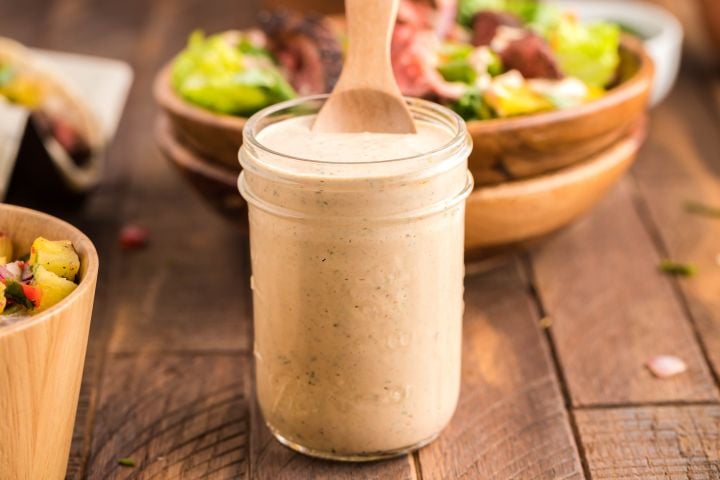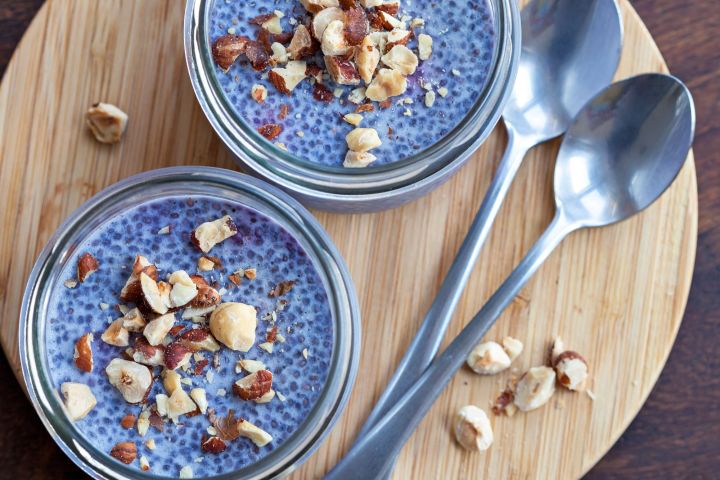Healthy Chow Mein (Panda Express Copycat)
Healthy chow mein that tastes just like Panda Express but without all the fat and calories! This recipe is so good and super easy to make.
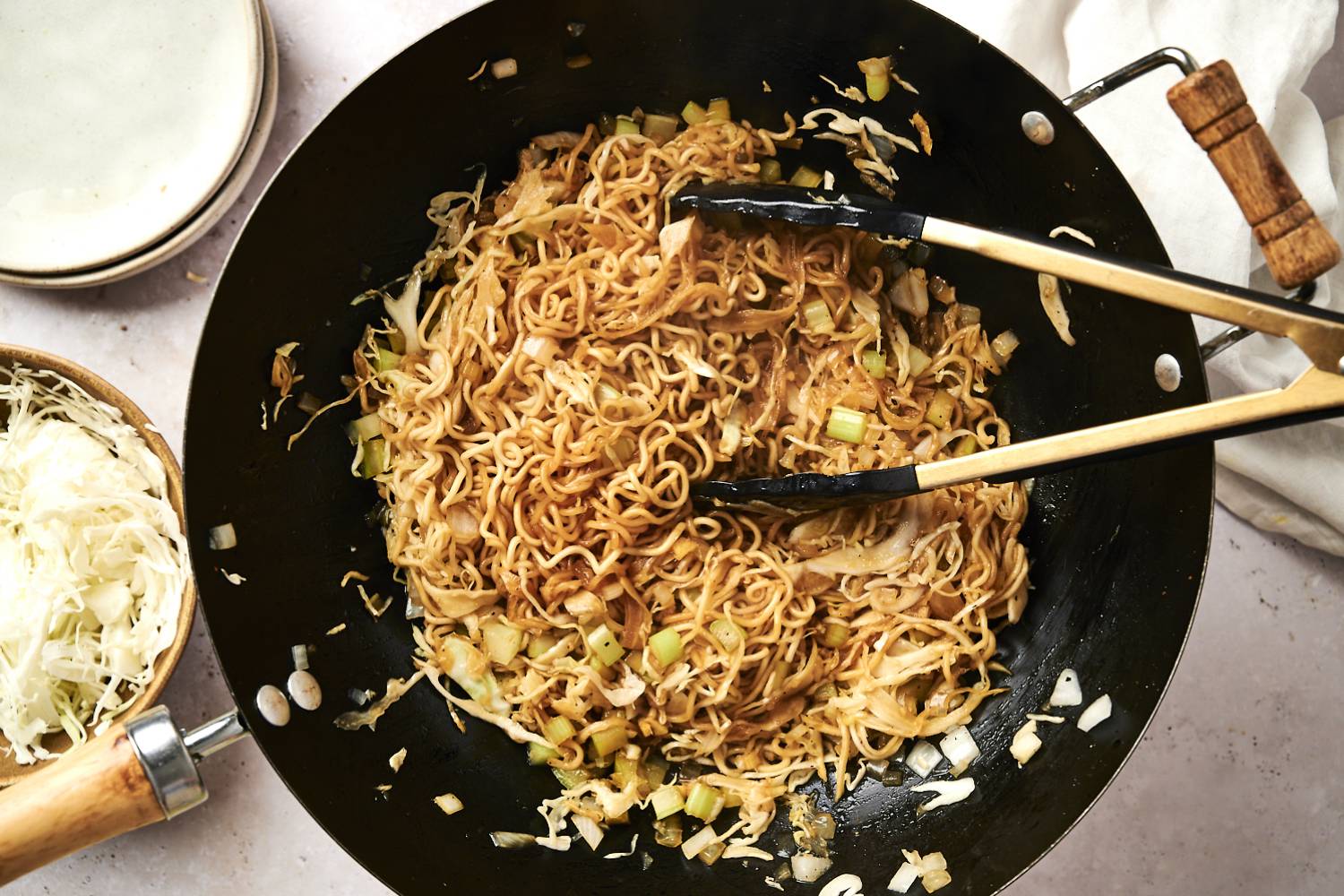
Healthy Chow Mein noodles with cabbage, carrots, and celery in a tasty homemade sauce is an easy side inspired by your favorite Chinese takeout. Serve it with this healthy Orange Chicken, Kung Pao Chicken, or Mongolian Beef!
If you love Panda Express chow mein (or any fast-food chow mein, for that matter), this healthier version you can make at home is for you! Not only is it better for you, I think it tastes even better than the real thing! And with only 140 calories per serving (compared to 490 in the real thing), it's a no-brainer when it comes to what to make for dinner decision-making time.
Now let's talk about the recipe. While this popular Chinese dish is pretty straightforward, there is one little ingredient you might find difficult to procure - fresh yaki soba noodles. You will probably have better luck by trying bigger grocery stores than a local little market. Or, if you are lucky enough to have an Asian market nearby, definitely go there. Asian markets are so full of delicious-looking ingredients, I could spend all day in them!
That said, you can choose either a fresh yaki-soba noodle, which you can normally find in the refrigerated section (near where the tofu is) or a dried yaki-soba noodle, which you can find in the Asian section of the store.
You could also use any other dried pasta, but using yaki-soba really makes a difference in terms of texture. After you have your hands on the noodles, all that's left is to whip up a quick savory sauce, add lots of shredded cabbage, and give it all a quick toss in a hot pan and it's ready. So good and so much better than the unhealthy take-out version.
Are you hungry for more healthy noodle recipes? My Chicken Lo Mein and Asian Noodle Bowl recipes are so easy to make and quite tasty too!
Why You’ll Love Making This Healthy Chow Mein
Here's why you'll love making this Chinese food from scratch:
- Healthier than takeout: This low calorie chow mein will surely satisfy your cravings for some tasty and savory stir-fried noodles without the guilt.
- Easy to personalize: Since this recipe is so simple, you can elevate and make it yours by adding your favorite stir-fried veggies, meat, and other toppings like green onions as much as you want.
- One-pan dinner: After preparing your veggies, cooking the noodles, and making the homemade chow mein sauce, just combine them all together in one pan for a quick and easy dish!

What Makes This Chow Mein Dish Healthy?
First of all, we've eliminated a lot of the unnecessary fats and oils from this noodle dish. You need very little oil to cook this dish anyway and I much prefer it when the flavors of the veggies, noodles, and sauce shine through rather than the taste of grease. The ingredients themselves are also healthy on their own!
- Noodles: While fresh yaki-soba noodles are not the lowest-calorie option, they are low in fat, cholesterol, sodium, and carbs. They are also made of buckwheat, which contains nutrients such as protein, manganese, and thiamine. They are also gluten-free. Feel free to use any Asian noodles, ramen noodles are the most common substitute. You can also use any dried pasta or egg noodles, though the texture will be different.
- Soy sauce: Low sodium soy sauce, also called light soy sauce, contains a variety of antioxidants and is good for your digestive system. Swap in coconut aminos or tamari for a gluten-free option.
- Garlic: These pungent cloves are chock full of antioxidants, antibacterial, antifungal, and antiviral properties, and it's also good for your heart, circulatory system, and cholesterol.
- Brown sugar: While brown sugar isn't stuffed full of nutrients, it does contain a little bit of calcium, iron, potassium, and magnesium. You can also use dark soy sauce and skip this.
- Ginger: Ginger is a great food if your stomach is upset as it helps relieve symptoms of nausea. It's also great for motion sickness and loss of appetite.
- Spices: Spices such as pepper add lots of flavor and no extra calories, fat, or other unhealthy things.
- Olive oil: Olive oil is a great oil for cooking, making dressings and marinades, and is a pantry must-have in this girl's kitchen. It's also a source of healthy fat and is good for your heart too! You can mix in some sesame oil too.
- Onions: Onions are low in calories but high in other nutrients like iron, folate, phosphorus, magnesium, calcium, and potassium as well as several antioxidants. Plus, they go great with garlic! I love adding spring onions too.
- Celery: Celery is a great source of water and fiber as well as vitamins K and A, folate, potassium, and vitamin C.
- Cabbage: Shredded cabbage is high in fiber, and we all know fiber is necessary to keep your digestive system running smoothly. Cabbage also contains some antioxidant properties and is high in C vitamins, which help your heart, among other things.

How to Make Low Fat Chow Mein Noodles
Skip the takeout and make this great recipe at home, in your own kitchen using simple ingredients. Here's how to do this copycat Panda Express chow mein recipe in under 20 minutes:
- Cook the noodles: Prepare the yaki-soba noodles according to the package directions. Do not use a seasoning packing if included. For fresh noodles, just add them to boiling water for 1-2 minutes until they separate and become tender. Dried noodles usually need to be boiled for 4-5 minutes.
- Make the sauce: Meanwhile, mix together the soy sauce, brown sugar, ginger, garlic, and pepper in a small bowl.
- Stir fry: Heat the olive oil over medium-high heat. Add the onion and celery and cook for 3-4 minutes. Add the cabbage and cook for 2 minutes until just tender. Add the noodles and the sauce. Cook for 2-3 minutes, stirring often. Taste and season if needed with additional soy sauce or pepper.
What Is the Difference Between Lo Mein and Chow Mein?
I always thought "lo" and "chow" were different kinds of noodles or different kinds of meats that you'd put into the noodles. But it turns out the differences lie in the way the noodles are prepared. Lo mein is made by tossing the noodles and chow mein is made by frying the noodles. "Mein" just means "noodle."
Of course, in this dish, we are not frying anything but rather giving it that "fried taste" while not using any unhealthy oils and instead using a little olive oil and a hot pan to end up with somehow crispy noodles. All the taste, none of the bad stuff.
Recipe Variations
One thing I really love about stir fry noodles is how versatile they are. I can switch up various ingredients and still end up with something so delicious and satisfying!
Here are some fun ideas for a great chow mein:
- Protein: Load up your chow mein with meat! My favorite is adding seared chicken breast to make chicken chow mein because the sauce really complements the flavor of the chicken so well. You can also use thin slices of pork, beef, and shrimp for this. Make sure to double up the sauce if you are adding protein.
- Vegetarian chow mein: Ditch the meat and use tofu (or other vegetarian protein sources) to make the dish vegetarian yet still extra filling.
- More veggies: Aside from cabbage and celery, you can also incorporate more vegetables like mushrooms, carrots, bean sprouts, and snow peas.
Recipe Tips and Tricks
Making crispy chow mein noodles is already as straightforward as it can be. Here's how to nail this homemade chow mein recipe every time:
- Prepare your ingredients beforehand: Make sure you have the chopped vegetables, the delicious sauce, and the noodles ready to go. The cooking process for this dish is quick, so it will be best to have them all ready to be tossed in the pan.
- Don't overcook the noodles: Test them as they cook and ensure they’re al dente or even undercooked before draining. The noodles will finish cooking once added to the pan with the thick sauce and other ingredients.
- Preheat the pan: Use a very hot pan when stir-frying to ensure the veggies stay crisp-tender (not soggy!) and the noodles don’t stick.

What to Serve with Chow Mein
Complete the takeout experience at home and serve this healthy chow mein with other yummy Chinese-inspired dishes for a complete meal:
- Classic dishes: Pair chow mein noodles with other takeout staples such as orange chicken, beef and broccoli, and Kung Pao shrimp.
- Dumplings: For a lighter meal, serve with beef dumplings, fried wontons, or egg rolls.
- Veggies: You can also opt to eat it with stir fried vegetables like bok choy, cabbage, and mushrooms, and bell peppers.
Storage, Reheating, and Make Ahead Instructions
Got any leftover chow mein? Make sure to store them properly and reheat for a quick meal that’s both hearty and healthy.
- To store: Transfer the chow mein noodles to an airtight container and place in the fridge for 2-3 days or in the freezer for up to 3 months.
- To reheat: Thaw frozen chow mein in the fridge overnight then stir fry quickly in a non-stick pan to warm it up. You can also reheat leftovers in the microwave but there’s a chance the noodles will get soggy.
- Make ahead: This recipe is great for meal prep! Prepare the vegetables, sauce, and protein, if you wish to add any, and place them separately in airtight containers in the fridge.
Frequently Asked Questions
Here are the most common questions about making this healthier chow mein.
Can you make chow mein with normal pasta?
Although it won't have the exact same texture or flavor, you can make chow mein with any type of cooked pasta you like, including spaghetti, linguini, or any type of rice noodles.
Is chow mein healthy?
Chow mein can be healthy with the right ingredients, but traditional restaurant versions tend to be higher in calories and fat due to fried noodles and generous amounts of oil. For example, Panda Express chow mein has 510 calories and 20 grams of fat per serving. Opt for lean proteins like chicken or tofu, and include plenty of vegetables for fiber and nutrients. To make it lighter, choose steamed or stir-fried noodles and use a low-sodium sauce to reduce salt. Limiting oil can also make it a more nutritious meal.
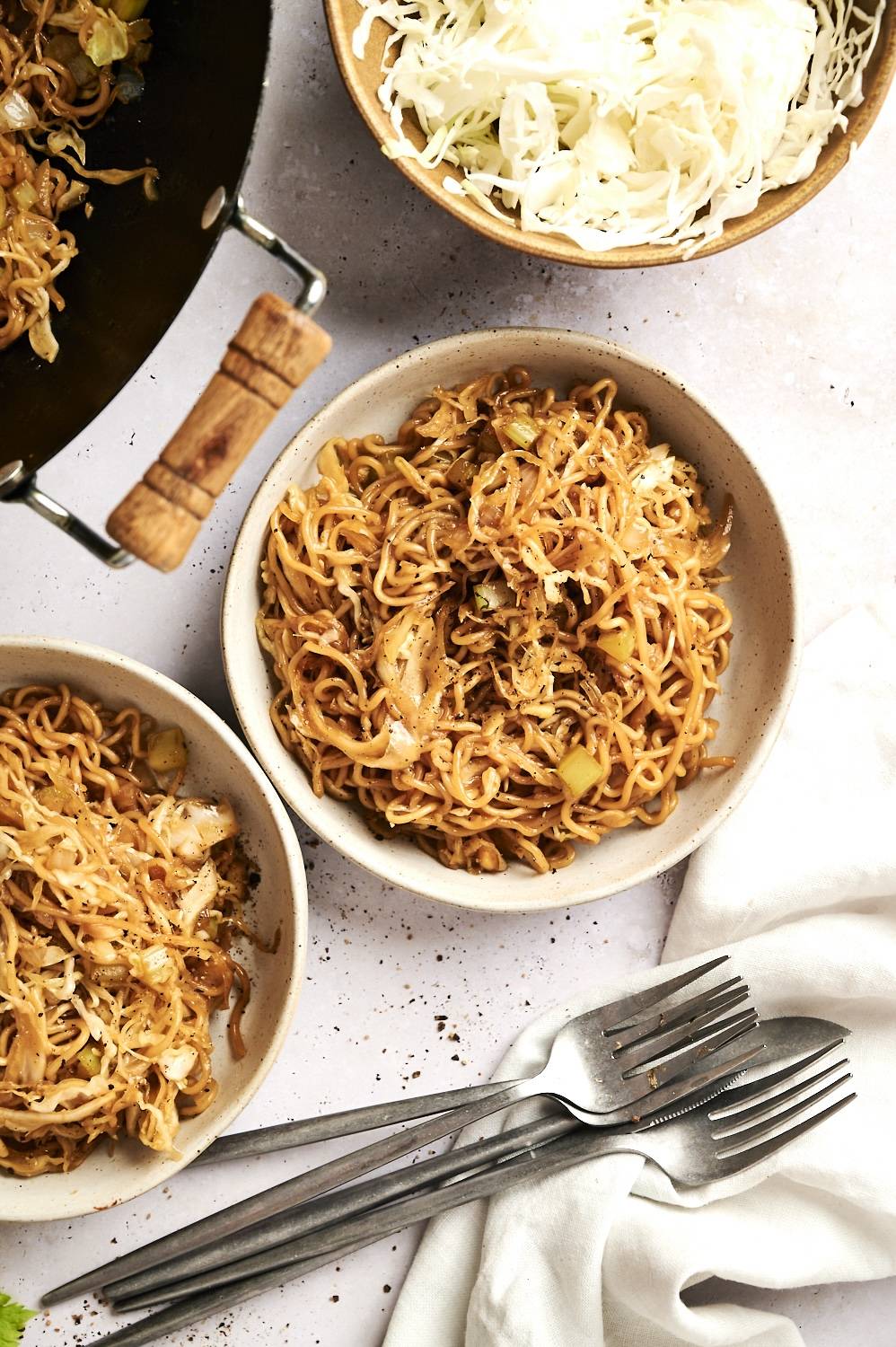
Healthy Chow Mein (Panda Express Copycat)
- Download
- Send to your inbox
Ingredients
-
4 oz. fresh yaki-soba noodles
-
1/4 cup low sodium soy sauce (GF if needed)
-
4 cloves garlic, minced
-
1 tbsp. brown sugar
-
2 tsp. ginger, minced
-
1/4 tsp. pepper
-
1 tbsp. olive oil
-
1 onion, diced
-
2 celery ribs, chopped
-
4 cups shredded cabbage
Instructions
(Hide Media)Switch to prevent your screen from going dark.
Equipment
* Percent Daily Values are based on a 2,000 calorie diet. Your daily values may be higher or lower depending on your calorie needs.
The Nutritional Values provided are estimates only and may vary based on the preparation method.

Get delicious, healthy recipes delivered each week right to your inbox.




Snap a picture and show us what you made on Instagram or Facebook.
Tag us using @SlenderKitchen or #slenderkitchen.





